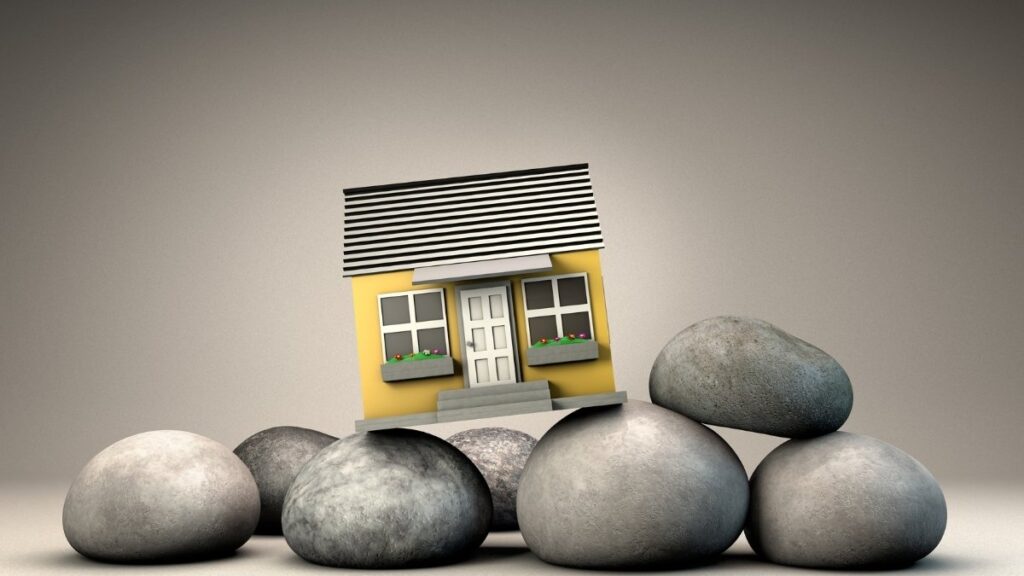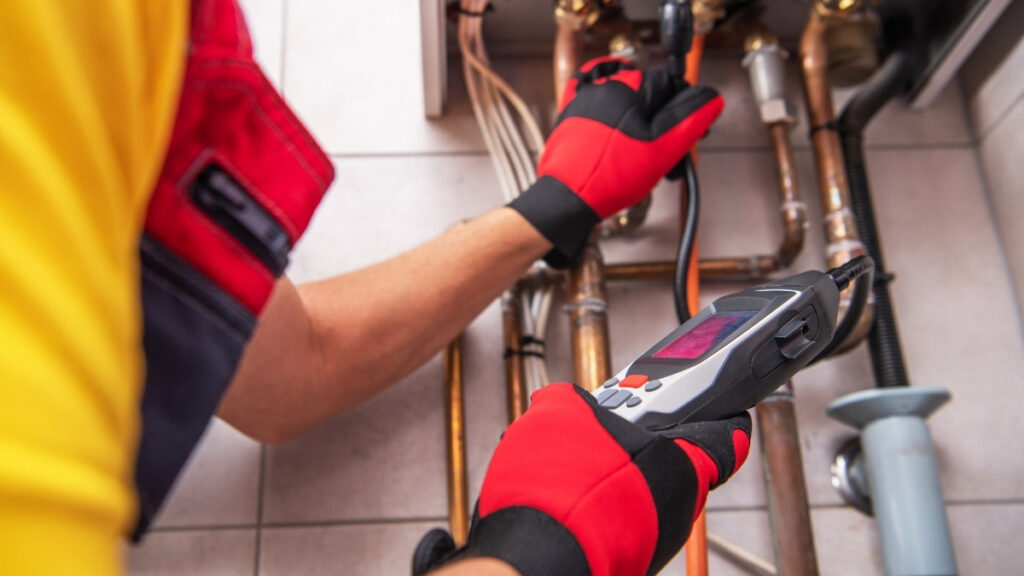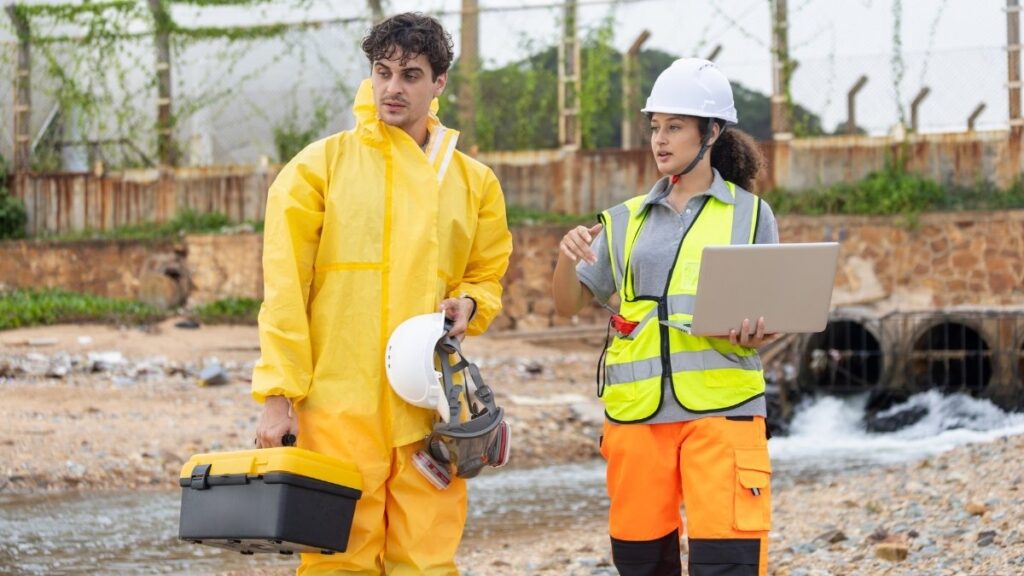
Thirty-one percent of first-time homebuyers experience buyer’s remorse after purchasing their first home. The leading cause isn’t the neighborhood or the layout—it’s discovering expensive problems they could have caught during inspection. You’ve saved for years, finally found your dream home, and you’re ready to make an offer.
But here’s the reality: while only 14-20% of buyers are waiving home inspections in competitive markets, 66% of first-time homebuyers still face unexpected issues after moving in, costing an average of $5,356.
The real nightmare? When multiple major systems fail simultaneously, repair bills can easily exceed $55,000. This guide shows you the exact inspection mistakes that lead to five-figure repair bills, current 2025 data on inspection costs versus repair costs, and a step-by-step system to protect yourself and negotiate repairs even in competitive markets.
The Real Cost of Skipping (or Rushing) Your Home Inspection
Here’s what most first-time buyers don’t know: you’ll pay around $343 for a home inspection in 2025. That’s the national average, though some inspections run between $296 and $424.

Seems like a lot of money when you’re already stretching your budget, right?
That’s probably why 17% of first-time buyers skip the inspection entirely. And if you’re making under $50,000 a year, you’re even more likely to skip it—23% of buyers in that income bracket do.
But here’s the thing: 86% of home inspections find something that needs fixing. That’s not a small detail. That’s almost every single home.
The numbers get better. Buyers who use their inspection results to negotiate save an average of $14,000 on the final sale price. Let’s do the math on that. You pay $343 for an inspection. You save $14,000. That’s a 4,000% return on your money.
But what if we compare that $343 to the $55,000 in hidden repairs you might face without an inspection? Now you’re looking at a 16,000% return on investment.
The home inspection industry is expected to hit $24.3 billion by 2026. Why? Because more people are learning this lesson the hard way. In fact, 72% of Gen Z and millennial buyers reported unexpected issues in their homes. Issues they didn’t see coming.
And in hot markets, the pressure gets worse. In 2024, about 22-25% of buyers waived their inspection contingency just to win the bidding war. They thought they had to. They were wrong.
You don’t have to choose between getting the house and protecting yourself. There are ways to do both. But first, you need to understand what you’re really risking.
The $55,000 Breakdown: What Skipping Inspection Actually Costs
Let’s talk about what actually breaks in a house. And what it costs to fix.
Foundation problems are the nightmare scenario. The average repair runs $5,165. That’s if you catch it early. If the damage is severe and you need foundation lifting, you’re looking at $20,000 to $30,000. Foundation cracks don’t fix themselves. They get worse.

Your HVAC system keeps you alive in summer and winter. When it fails, replacement costs average $7,500. But that’s just for the basic job. If you need new ductwork too, the bill can hit $22,000. Most systems last 15-20 years. If the inspector would have told you the system was 18 years old, you could have planned for this.
Roofs are sneaky. A minor repair might only cost $770. But a full replacement? That’s $5,000 to $12,900 for a standard roof. If you’ve got slate or high-end metal, add another $8,000. You could be looking at $20,000 total. And roof problems cause water damage, which causes mold, which causes even more problems.
Electrical panels seem small until they’re not. Simple electrical work runs $163 to $535. But if you need to replace the breaker panel—which you will if it’s outdated or dangerous—that’s $520 to $2,120. Old electrical systems are also fire hazards. That matters.
Major plumbing repairs and repiping can cost $5,000 to $15,000. Pipes leak behind walls. You don’t see them until the damage spreads. By then, you’re paying for the pipes and everything the water destroyed.

Mold remediation averages $2,230. But that’s for a contained problem. If mold gets into your HVAC system, you’re looking at $500 to $10,000. Extreme cases top $30,000. Mold makes people sick. It has to go.
Here’s How It Adds Up
Let me show you a real-world scenario. This is what happens when you skip the inspection:
- Foundation cracks: $8,000
- Failing HVAC system: $12,500
- Roof repairs: $9,500
- Outdated electrical panel: $2,500
- Plumbing leaks: $6,500
- Mold from water damage: $8,000
- Miscellaneous repairs: $8,000
Total: $55,000
That’s more than most people’s annual salary. That’s a new car. That’s your kid’s college fund. And you’re paying it because you wanted to save $343.
The worst part? All of these problems were visible to a trained inspector. They would have shown up in a 2-3 hour inspection. You could have negotiated. You could have asked the seller to fix them. You could have walked away and found a better house.
Instead, you own all of it now.
The 9 Critical Home Inspection Mistakes First-Time Buyers Make
You don’t have to skip the inspection entirely to mess this up. Here are the mistakes that cost people thousands even when they do get an inspection.
Mistake #1: Waiving Inspection to Win a Bidding War
The market is competitive. You’re up against five other offers. Your agent tells you the other buyers are waiving their inspection contingency.

So you do too.
Bad move. In 2024, about 22-25% of buyers waived inspections. Many of them regret it.
Here’s a better way: Reserve the right to conduct an inspection for information gathering. You’ll still do the inspection, but you’re telling the seller you won’t hold them responsible for repairs. This protects you without killing your offer.
Or pay for a pre-inspection before you even make an offer. It costs the same $343, but now you know what you’re buying before you commit.
Mistake #2: Not Attending the Inspection
You’re busy. You trust the inspector. You’ll just read the report later.
Wrong again. Being there teaches you about your home. You see where the water heater is. You learn how to change the furnace filter. You ask questions in real-time.
The inspector will show you things that don’t make it into the report. They’ll point out the weird noise the furnace makes. They’ll show you the trick to opening that stuck window. They’ll warn you about the tree that’s too close to the foundation.
You can’t learn that from a PDF.
Mistake #3: Choosing the Cheapest Inspector
Only 14% of buyers select inspectors based on recommendations from friends and family. Even worse, 10% let the seller choose their inspector. That’s like letting the car dealer choose your mechanic.
The cheapest inspector saves you maybe $100. A bad inspector costs you thousands in missed problems.

Look for certification from ASHI (American Society of Home Inspectors) or InterNACHI. Check their license. Read their reviews. Ask how long the inspection takes. If they say less than 2 hours, find someone else. Good inspections take 2-3 hours minimum.
Mistake #4: Ignoring “Minor” Issues in the Report
The inspector notes a small crack in the foundation. You ignore it. Three years later, you’re paying $8,000 to fix it because it spread.
The most common problems inspectors find: roofs (19.7% of inspections), electrical issues (18.7%), and windows (18.4%). None of these sound dramatic. All of them get expensive.
Minor issues become major problems. That small roof leak becomes water damage, which becomes mold, which becomes a $10,000 nightmare. Pay attention to the small stuff.
Prioritize safety over cosmetic concerns. A cracked outlet cover is cosmetic. An outlet that sparks when you use it is a fire hazard. Know the difference.
Mistake #5: Not Getting Specialized Inspections
Your standard inspection doesn’t cover everything. It won’t test for radon ($125-$400). It won’t check for termites ($75-$325). It won’t inspect your septic system ($540) or your well ($300-$600).

Sometimes you need specialists. If the inspector sees something concerning with the foundation, hire a structural engineer. If the electrical panel looks sketchy, get an electrician. If there’s water staining, call a plumber.
Yes, this costs more money. But inspection costs have gone up 60-80% in the past decade because homes are more complex and people have learned that cutting corners doesn’t work.
Mistake #6: Treating All Issues as Deal-Breakers
Your inspection report lists 30 problems. You panic. You think the house is falling apart.
Take a breath. According to data on first-time buyers, 45% of unexpected issues were cosmetic or minor repairs. That loose door handle? Minor. The peeling paint? Cosmetic. The 20-year-old furnace that still works? That’s something to plan for, not panic over.
Learn to distinguish between three types of problems:
- Walk-away problems: Major foundation damage, active mold throughout the house, serious electrical hazards
- Negotiable repairs: Aging HVAC system, roof with a few years left, outdated electrical panel
- Minor fixes: Cosmetic issues, small repairs, maintenance items
Use the inspection as a negotiation tool. That’s what 46% of buyers do. They don’t walk away. They ask for a lower price.
Mistake #7: Not Understanding What’s NOT Covered
Your inspector can’t see through walls. They can’t test for lead paint or asbestos. They won’t check for pests unless you pay for a separate pest inspection. They don’t inspect septic systems or wells unless you hire specialists.

They also can’t access hidden areas. If your attic entrance is blocked by furniture, they can’t inspect the attic. If your crawl space is locked, they can’t get in there.
Before the inspection, make sure your inspector can access everything. Move the boxes. Unlock the doors. Clear the path.
Mistake #8: Rushing Through the Report
You get a 40-page report. You skim it. You focus on the summary. You miss the critical details buried on page 23.
Read the whole thing. When the report says “monitor,” that means “this could become a problem.” When it says “further evaluation recommended,” that means “get a specialist to look at this now.”
Take notes. Highlight the red flags. Make a list of follow-up questions. Call the inspector if something isn’t clear. That’s what you paid them for.
Mistake #9: Not Budgeting for Repairs After Closing
Even if your inspection is clean, things break. The average annual home maintenance costs over $8,800 in 2025. That’s $733 per month you need to set aside.

Experts recommend saving 1-2% of your home’s price annually for maintenance. If you bought a $300,000 house, that’s $3,000-$6,000 per year. Your AC will die. Your water heater will leak. Your roof will need work.
Create a home repair emergency fund before you buy. Because the repair bills don’t stop after closing. They’re just getting started.
Your Complete First-Time Buyer Inspection Checklist
Here’s exactly what to do before, during, and after your inspection.
Before the Inspection
Research your inspector. Check their license. Verify their insurance. Look for professional memberships in ASHI or InterNACHI. Read reviews from actual buyers.
Schedule the inspection during your contingency period. That’s usually 7-10 days after your offer is accepted. Don’t wait until the last minute.

Budget for additional specialized inspections. If the house has a septic system, well, or is in a radon-prone area, plan for those extra costs now.
Clear your schedule. You need to be there. No excuses.
During the Inspection
Bring a notepad and your phone for photos. Don’t rely on memory. You’ll forget half of what you see.
Ask about anything you don’t understand. “What’s that noise?” “Why is this stained?” “Is this normal?” Your inspector expects questions. That’s part of the job.
Focus on the big-ticket items:
- Foundation (cracks, settling, water damage)
- Roof (age, condition, leaks)
- HVAC (age, function, maintenance history)
- Electrical (panel type, capacity, safety)
- Plumbing (leaks, water pressure, pipe material)
Check the small stuff too. Test faucets. Try outlets. Open and close doors and windows. Make sure smoke and CO detectors work. Look at the water heater strapping.
After the Inspection
Read the full report within 24 hours while everything is fresh in your mind. Don’t wait three days and forget what you saw.
Highlight items that need immediate attention. These are your safety hazards and major repairs.
Get quotes for major repairs from actual contractors. Don’t guess at costs. You need real numbers for negotiation.
Categorize every issue:
- Safety hazards (fix immediately)
- Major repairs (expensive, urgent)
- Minor fixes (cheap, can wait)
- Cosmetic (nice to have, not essential)
Decide on your negotiation strategy with your agent. You have options.
Your Negotiation Options
46% of buyers use inspection results to negotiate a lower price. That’s the most common approach. But you have other choices:
Request repairs before closing. The seller fixes the problems before you move in. This works best for major safety issues.
Ask for seller credits at closing. They give you money at closing, and you handle the repairs yourself. This gives you control over the work quality.
Request a price reduction. You take the repair costs off the purchase price. Then you fix things on your schedule.
Pick the option that makes sense for your situation. Sometimes splitting the costs is the compromise that gets the deal done.
How to Negotiate Repairs (Even in a Hot Market)
The market is competitive. You’re worried that asking for repairs will kill your deal. But here’s what you need to know.

38% of first-time buyers felt pressured to make decisions quickly. And those buyers were three times more likely to experience buyer’s remorse. Don’t be that person.
Focus on health and safety issues. Electrical hazards. Active mold. Structural problems. These aren’t preferences. These are legitimate safety concerns. Sellers usually understand this.
Get multiple contractor quotes to support your requests. Don’t say “the roof needs work.” Say “the roof needs $9,500 in repairs according to three licensed contractors.” Numbers are harder to argue with.
Offer compromise solutions. Split the repair costs 50/50. Accept a seller credit instead of completed repairs. Take some items off your list if they’ll fix the critical ones. Negotiation means both sides give a little.
Know when to walk away. If the seller refuses to address serious safety issues, that tells you something about the house and the seller. Sometimes the best deal is the one you don’t make.
Alternative approach: Do the inspection for information only. Factor all the repairs into your offer price from the start. This way you’re protected, and the seller gets a clean offer with no repair requests later.
Red Flags That Should Make You Walk Away
Some problems aren’t worth fixing. Here’s when to run.
Major foundation problems. If the foundation has significant settling or structural damage, walk away. We’re not talking about hairline cracks. We’re talking about doors that won’t close, floors that slope, and cracks you can fit your hand into. Foundation repairs can exceed $30,000, and they’re not always successful.

Active mold in multiple locations. One small patch of mold in a bathroom? Fixable. Mold in the walls, attic, crawl space, and basement? That house has serious water problems. You’ll be fighting mold for years. Move on.
Serious electrical hazards. If the house has an outdated Zinsco or Sylvania panel, those are known fire hazards. If the wiring is ancient knob-and-tube that wasn’t properly updated, that’s dangerous. If the panel is overloaded or improperly wired, you’re risking a fire. Electrical rewiring can cost $15,000+.
Failed septic system. Replacing a septic system costs $9,500 or more. If the inspection shows it’s failed or failing, and the seller won’t fix it, walk away. You can’t just ignore a septic system. It’s not optional.

Extensive roof damage. If there are multiple layers of shingles (which means they kept covering up problems), or if there’s structural damage to the roof deck, you’re looking at a complete tear-off and rebuild. That’s $12,000-$20,000. If the seller won’t address it, find another house.
Evidence of unpermitted work. If someone did a major addition, finished a basement, or moved plumbing without permits, you could have problems. Banks might not lend on it. Insurance might not cover it. You could be forced to tear it all out to bring it up to code. That’s not your problem to inherit.
Don’t Pay $55,000 to Save $343
Let’s bring this back to where we started. A home inspection costs $343 on average. The repairs you’ll miss without one can cost $55,000 or more.
66% of first-time buyers faced unexpected issues in their homes. You don’t want to be in that group. Not when you can prevent it for a few hundred dollars.
An inspection isn’t optional. It’s financial insurance.
Here’s what to do right now:
Schedule your inspection before you make an offer. Get a pre-inspection so you know what you’re buying. No surprises.
Interview at least three certified inspectors. Check their credentials. Read their reviews. Pick the best one, not the cheapest one.
Budget for specialized inspections. Radon, termites, septic, wells—whatever your house needs. Don’t skip these.
Be there for the inspection. Take photos. Ask questions. Learn about your home.
A $343 inspection can save you $55,000 in repairs. That’s not hype. That’s math. Make the smart choice.
Your future self will thank you.






